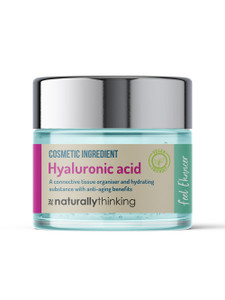
Lauric acid
Full of antibacterial and anti-inflammatory actions, Lauric acid is a fatty acid found in coconut and is used for its skin repairing, anti-acne, detergent and cleansing properties
Full of antibacterial and anti-inflammatory actions, Lauric acid is a fatty acid found in coconut and is used for its skin repairing, anti-acne, detergent and cleansing properties
Lauric acid
Research has shown that lauric acid on skin can help control acne-causing bacteria. The lauric acid fuses to the bacterial membrane of P. acnes bacteria, keeping it from proliferating. Lauric acid can also reduce inflammation from acne. Lauric acid is often used at higher levels to impart a pleasant natural fragrance. Typically Lauric acid is used in cosmetic formulations as a solubiliser in emulsions.
Characteristics
A solid white waxy pellet that is derived from the Coconut
Latin Name
Lauric acid
Cas Number
143-07-7
Origin
Coconut
How to use
Add during the oil stage of production. Typically used up to 5% for fragrance and around 1% for solubilisation. Lauric acid is used in emulsions, such as cream emulsion where it helps solubilise essential oil into the final formulation, improving dispersion and and the final cream quality.
Recommended Usage Level
1-5% All Products
Maximum Usage Level
No maximum limit set, often used at higher doses to add scent to a product
Products to Use in
- Shower Gel
- Shampoo
- Face Wash
- Bath Foam
Precautions
At pure usage levels it can cause irritation to the skin.
When blending always take the following precautions:
- Use gloves (disposable are ideal)
- Take care when handling hot oils
- Wear eye protection
- Work in a well ventilated room
- Keep ingredients and hot oils away from children
- If ingested, seek immediate medical advice
- If contact made with eyes, rinse immediately with clean warm water and seek medical advice if in any doubt.
Safety First
In addition to our precautions and general safety information, we always recommend keeping a first aid kit nearby. You are working with hot water and oils, accidents can happen, so always be prepared!
- Skin Type:
- All Skin Types
- Size:
- 125g
- Key Benefits:
- Antibacterial, Anti-inflammatory, Acne, Detergent, Skin repairing
- Soluble in Water:
- No
- Soluble in Oil:
- Yes
- Soluble in Alcohol:
- No
- HS Code:
- 291590901
- HS Description:
- Lauric acid for cosmetic use
- HS Country:
- GB
- HS Composition:
- Wax
Ingredients
You can view the full ingredients by Clicking Here
Lauric acid Safety Data Sheet (SDS)
Lauric acid The SDS can be downloaded by Clicking Here
Lauric acid Technical Data Sheet (TDS)
Lauric acid The TDS can be downloaded by Clicking Here
Lauric acid Certificate of Analysis (COA)
Generate the certificate of analysis for your purchased product by entering your Batch Number which can be found on the packaging of your product.
Lauric acid Allergens Declaration
Generate an allergens declaration for your purchase (essential oils only)






